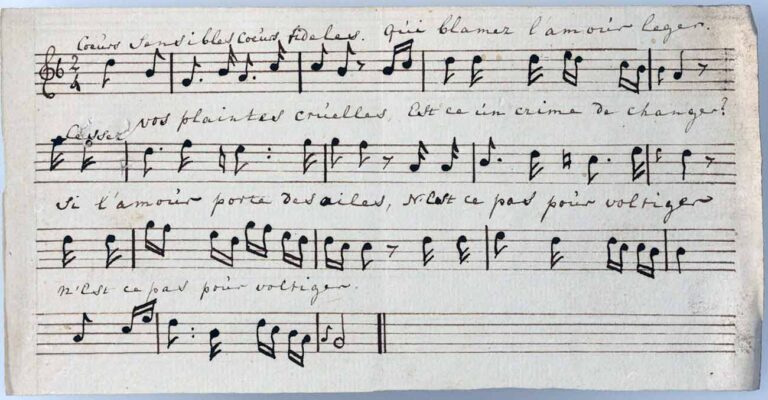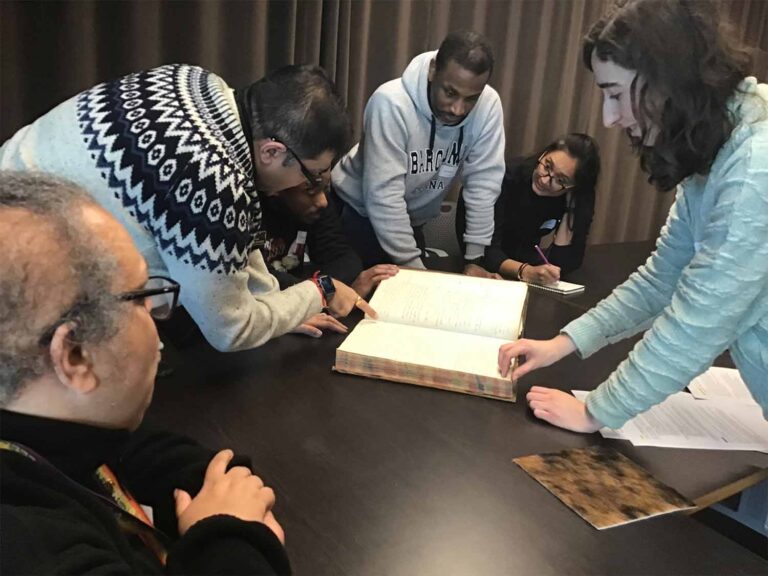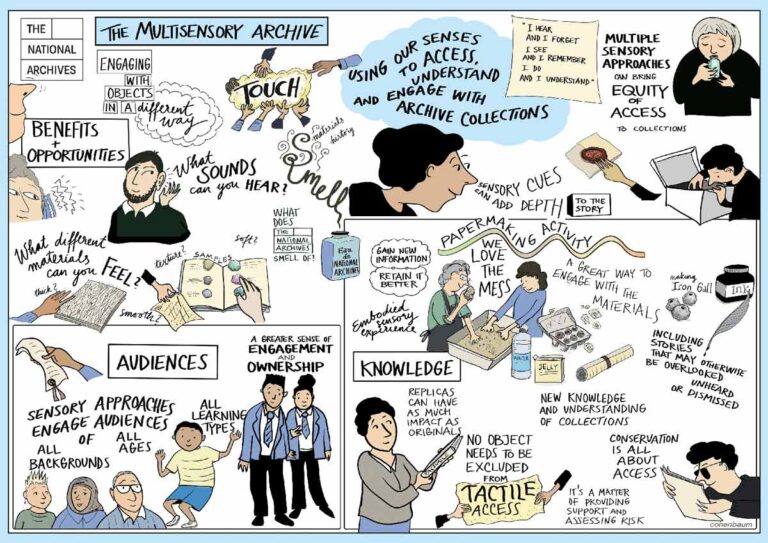In a recent project at The National Archives, I’ve been exploring how the senses can be used to access, engage with, and understand the materiality of archival collections.
Having explored the sensory characteristics of archival documents in part one of this blog series, the next stage of my research was to understand the opportunities offered by using the senses to widen access to collections. For this, I engaged in three types of research: research through conversation; research through collaboration; and desk-based case study research.
Working with the senses in the heritage sector
Smell
Did you know you can preserve and recreate historical smells? Using scientific analysis such as gas chromatography mass spectrometry, it’s possible to capture and analyse the chemical composition of objects through their volatile organic compounds (the gasses they release) and then recreate this as you would a recipe.
Recreated smells are being used in exhibitions, tours, education lessons, outreach activities, and to disseminate scientific research. The Odeuropa research project has investigated using smell in a variety of research and engagement settings. Their findings discovered that odours can help provide new perspectives to collections, generating conversations and unearthing new and unexpected stories.
Sound

Sound is being used as both a preservation and engagement tool. Sounds of materiality, such as pages turning, are identified with the relaxing wellbeing benefits of ASMR and can engage global online audiences with the materiality of collections – as the V&A have shown. Through sound, it’s also possible to preserve the intangible heritage captured within collections, such as within music sheets, as well as contextualise collections within their natural environment to enhance understanding.
Touch
Conservators are playing a central role in enabling touch of collections. By assessing risk and providing support, collection items can be made accessible to audiences with additional tactile needs. The value of touch in extending the life-experiences generated by objects is noticeable even with facsimiles, with observational feedback indicating that high-quality, material-for-material facsimiles in exhibitions can offer meaningful and joyful experiences for visitors of all ages.
purpleSTARS at The National Archives
As part of my research, I worked with purpleSTARS, a group of researchers with and without learning disabilities who provide expertise and promote awareness of the different ways audiences can engage with collections. The co-researchers visited The National Archives in January 2024 to explore and feedback on the potential of a sensory approach to accessing our collections.
The value of this approach to break down barriers and unlock our collections for audiences with different tactile and sensory needs was immediately apparent. Some of the co-researchers came to us thinking that an archive wasn’t a place for them, but they left feeling the opposite. The air of excitement at being allowed to physically handle our documents was evident and through a sensory approach, documents and objects within our collection were made accessible.
By focusing on the multisensory characteristics of our documents, different questions were asked of our collection (such as how such heavy seals could be attached to documents and not break them), and alternative perspectives emerged. This injected personal and humanising views into understanding our collections.

Overall, the visit demonstrated how opening up our collections to audiences in this way enables alternative ways of discovering and understanding them.
This potential was exemplified by the creative responses the visit inspired. The co-researchers created a sensory label, showcasing an inclusive and sensory way to communicate information on an object, and designed a seal making activity as a creative method to convey knowledge on the materiality of our collection.
purpleSTARS have written two blogs about their visit to The National Archives. You can read both the first blog and the second on their website.
Making sense of it all – benefits
So how can we sum up the value of using our senses to engage with archival collections?:
- The potential to enable greater equity of access for diverse audience groups, including those with additional tactile and sensory needs. By providing an alternative way of accessing, discovering, questioning, and understanding our documents, we can unlock our collections for diverse groups, enabling different views, experiences and perspectives of our collection to be showcased.
- Using our senses enhances the story of the object beyond the written word, helping us to understand it on a deeper level and re-inserting objects back into research and interpretation narratives.
- Opportunities to counteract past exclusion and foster inclusive engagement with collections and heritage sites are created. This can, in turn, have a positive effect on physical wellbeing and a sense of belonging.
- It’s fun to explore and engage with objects using our senses! It starts conversations, encourages new lines of questioning, and gets people talking to each other.

This project has shown me that engaging with the sensory characteristics of objects creates opportunities to both broaden access to archival collections for diverse audiences and enrich experiences within archival settings.
Going forward, I’m using the knowledge and developing the connections I’ve made to support inclusive access practices and engagement projects here at The National Archives that aim to widen access to our collections.
I’m also putting what I’ve learnt into practice by producing sensory displays. As part of our one document display, Stories Unboxed, throughout October you can visit The National Archives and use touch, sound and smell to explore the material story of an object within our medieval collection: a small 13th century roll, E 101/234/19, which is part of the Virtual Record Treasury of Ireland project. If you do visit, let us know your sensory thoughts afterwards by sharing your feedback on the display approach.